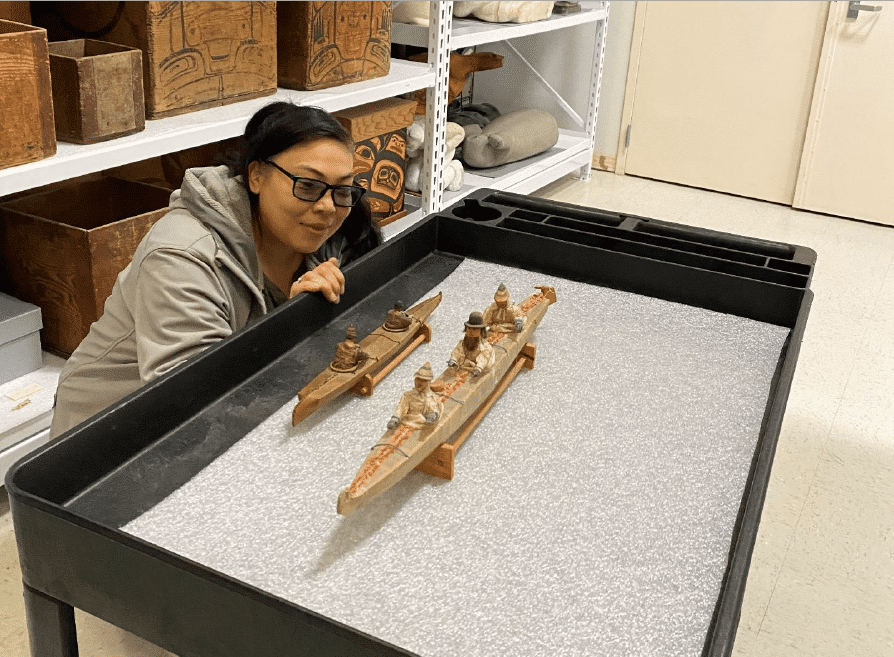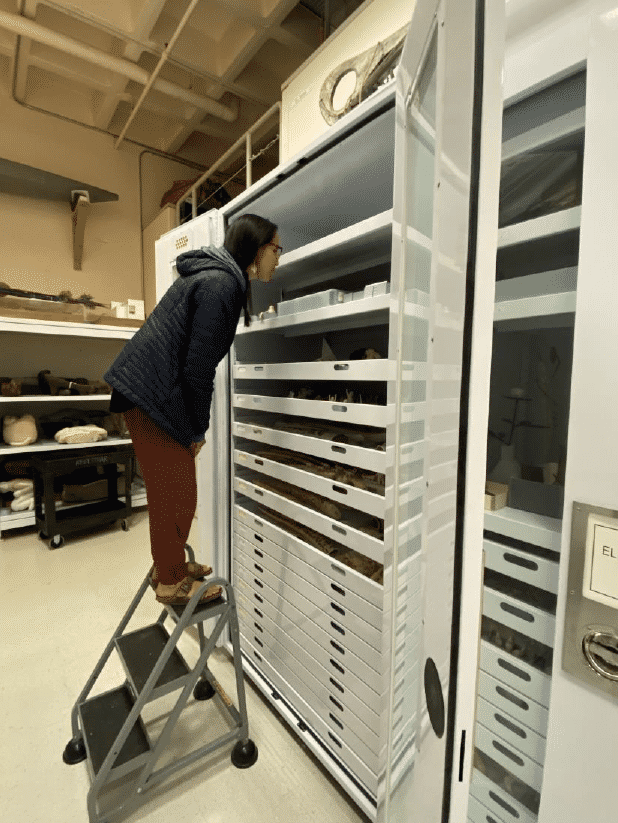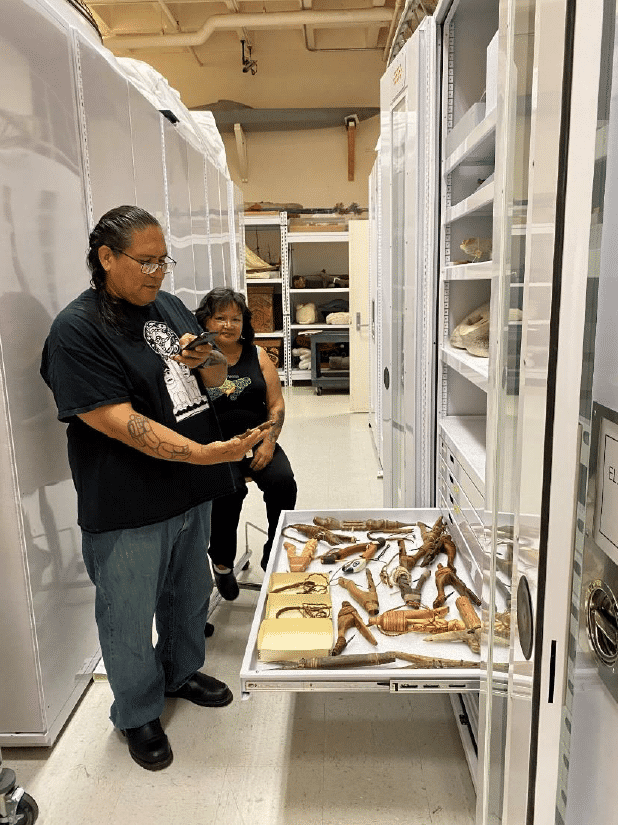Polar Lab: Collective Program
The ARTShops program is a collaboration between the Alaska State Council on the Arts, the Alaska Arts and Culture Foundation and The CIRI Foundation’s A Journey to What Matters: Increased Alaska Native Arts and Culture grant program. Established in 2016, ARTShops support emerging Alaska Native arts leaders to develop their skills in leading community-based arts programs.
Thanks to the CIRI Foundation support, the Anchorage Museum expanded the scope of its Polar Lab: Collective program. The program is for emerging Alaska Native artists to study the collections of the Anchorage Museum and the objects in the Smithsonian Arctic Studies Center’s Living Our Cultures exhibition. The program provides an opportunity for artists to find inspiration, insights and technical information from the collections through close-up research and documentation contributing to the collaborative relationship between artists and museums.
Selected artists participate in a three-part program:
- Meet with Museum staff (in person or by phone) to discuss potential research interests;
- Spend two days at the Museum meeting with staff and studying objects and archival resources; and
- Provide evaluation and reflection to share the experience with the program.
This year, three ARTShop leaders were able to participate in the program at the museum: Anfesia Tutiakoff, Nikki Corbett, and William Bolton, through funding provided by the CIRI Foundation.

Anfesia Tutiakoff examining Unangax kayak models.
Ms. Tutiakoff (Unangax, living in Unalaska) had recently been a researcher in the collections storage, viewing cultural heritage items made of seal and sea lion intestine. When invited to visit again as part of the PLC program, Ms. Tutiakoff chose to focus on objects in the Smithsonian’s exhibition, on gut items from other areas of Alaska in the Museum collections, and on historical photographs and books in the Museum archives. Museum staff pulled some items from the Smithsonian exhibition so that Anfesia could view them from all angles and up close. For those too large to remove from the case, she viewed them with the cases open. In museum storage, she focused on kayak models and bags that she had not previously seen. The archivists pulled photographs for her that included images from the Aleutian Islands, images of people processing gut, and people wearing or holding clothing/items made from gut.

Nikki Corbett viewing Yup’ik ivory objects.
Ms. Corbett (Yup’ik, living in Soldotna) had not been to the storage areas of the Anchorage Museum previously. She spent most of both days in the Museum storage, viewing all of the Yup’ik cultural heritage items. Ivory, parkas, headdresses, footwear, masks, bowls, spoons, dolls, hunting tools, baskets, lamps… Nikki was able to view almost everything the museum cares for from the Yup’ik region. Her exuberance and interest were infectious. Helping provide access to these collections reminded us why we are committed to making certain that Alaska Native community members have access to the collections, and that they are able to interact with the collections in ways that they desire rather than the way museums dictate. Nikki also spent a couple of hours on her second day in the archives, viewing photographs. She wasn’t able to go through all the images, therefore we are already planning future visits.

William Bolton and his wife Mary examining halibut hooks.
Mr. Bolton (Tsimshian/Tlingit, living in Metlakatla) focused his visit on tools, fishing implements, bentwood boxes, rattles, masks, and baskets. The first day was entirely in the Museum collections storage, looking as much as possible at any material culture made by Tlingit, Haida, or Tsimshian people. The second day was split between viewing those items on display in the Smithsonian exhibition and viewing photographs in the Museum archives. The Tsimshian, Haida, and Tlingit Smithsonian exhibition cases were all examined, though the most time was spent photographing and examining the Tsimshian items. We were able to move objects and rotate them on mounts, so that William could view the back sides as well as the front. His time went quickly and we hope he will be able to return to view more items in archives and storage when he is in Anchorage later this fall.
Through this grant, the museum was able to offer three additional Alaska Native artists funding to participate in the Polar Lab: Collective program. The program normally is able to fund 3-4 artists, but this year, we will be able to have 6-7 artists because of this funding. Thank you for making this possible, as there are so many artists wanting to participate, and limited funding holds us back from offering more opportunities.
